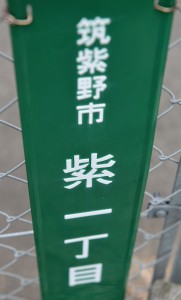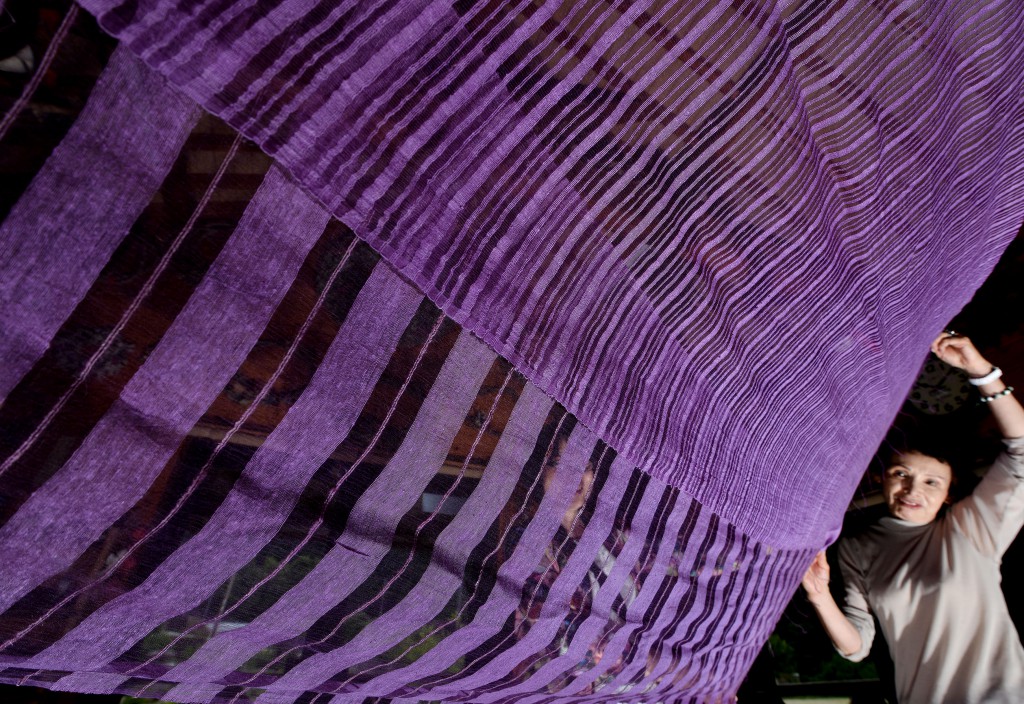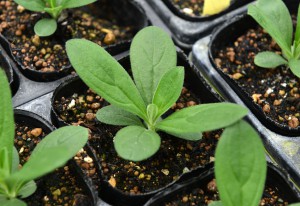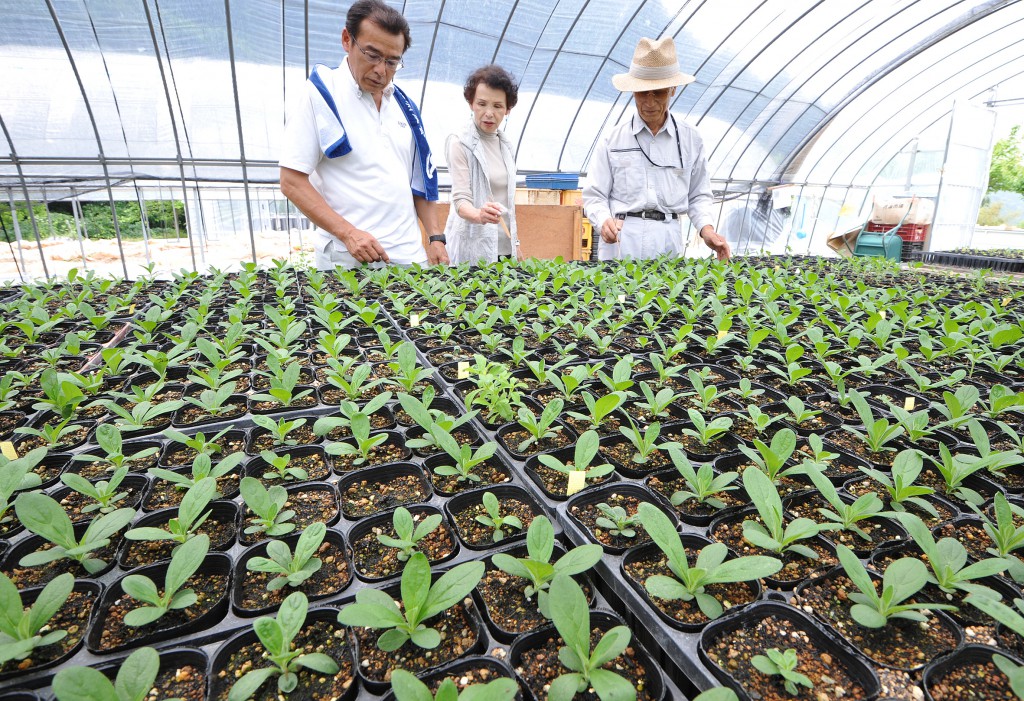Kotaro Yamada
– Murasaki (purple) Project (Chikushino-shi, Fukuoka Prefecture) –

Some areas in Chikushino city are still called Murasaki as there were wild Murasaki plants all around the town in the past.
Residents of Chikushino-shi, Fukuoka Prefecture, are trying to boost the development of the city by restoring old traditional coloring methods that uses lithospermum erythrorhizonor, which is called Murasaki-so (purple plant) in Japan. Murasaki-so, also called Murasaki in a shorter form, had been cultivated all around the city as a plant to make natural purple colorant. Some years ago, the city, which uses a Chinese character for Murasaki (purple) in its name, decided to take on a challenge to grow this old coloring plant again in order to make it a new local specialty.
“It was an unforgettably impressive moment when we could finally use Murasaki for dyeing cloth for the first time,” said Kiyoka Shinsenji, who is one of the members of the Chikushino Murasaki Town Development Association (Chikushino Murasaki Machizukuri Kyokai). She looked so happy when she showed a beautifully-dyed purple stole.
The bright color is created by the dye made from the roots of Murasaki grown by the members of the association. The dyeing method goes like this. Cloth is soaked in the warm water with small pieces of the roots of Murasaki. Then the cloth is taken out and put in the water with camellia ashes, for example, for dye fixation.
The 65-year-old lady also expressed her ambition to start selling Murasaki-dyed products, such as ties and mobile phone straps, of which she has already made samples. “The color is all natural but it’s so brilliant. We’ll continue to work on the method to make it even more beautiful,” she said in an aspiring tone.
Murasaki is an herbaceous perennial rhizomatous plant of the genus lithospermum, belonging to the family boraginaceae. It used to grow in the wild all around the city while there were also many farmers who cultivated the plant in the area. In the Nara period, Murasaki-dyed cloth was one of the tributes to the Emperor. People say the name of the city, Chikushino that uses a Chinese character for purple, partially came from this historical linkage to Murasaki. After the Meiji Era, the use of Murasaki roots for coloring faded out along with the development of chemical dyes. So the plant is now listed as one of the endangered plants in the red data book compiled by the Ministry of the Environment of Japan.





